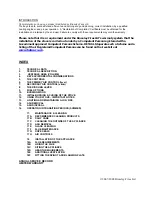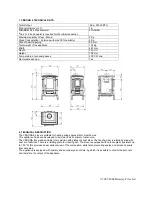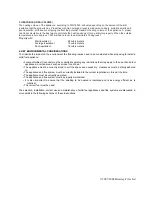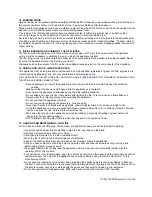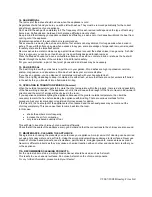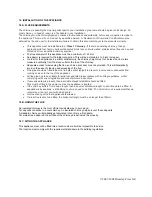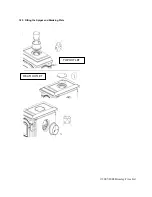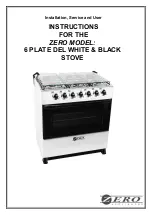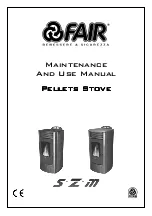
© 2007-2008 Broseley Fires Ltd
14. ASH REMOVAL
The removal of the ashes should be done when the appliance is cold.
Regardless of what wood you burn you will be left with ashes. They must be removed periodically for the correct
and efficient operation of your appliance.
Don’t wait till the ash pan's completely full. The frequency of this ash removal will depend on the type of fuel being
burned, as. Softwoods and, hardwood both produce differing amounts of ash.
Keep in mind that cleaning your appliance boosts its efficiency, as ash, soot or tar deposits will block the heat from
coming out of the appliance.
Periodical inspection of the ash chamber is recommended.
Take care when removing the ash, as small bits of hot embers can stay dormant for long periods when buried in
ashes. These will then flare up again when exposed to oxygen, some knowledge of proper ash removal is required
for safety. Here are the important points:
Remove ashes to a metal container using a small trowel. Never vacuum the ashes unless it is a genuine ‘Ash Vac’.
This is a vacuum you can buy at hearth shops; it is specifically designed for ash removal.
Place the filled ash bucket on a non-combustible surface such as stone, concrete, brick, or slate, as the heat will
transfer through the bottom of the container. Fit a lid for extra safety.
For your own protection, a pair of heat proof gloves and a dust mask may be necessary.
15. ASH DISPOSAL
The best thing to do with your ashes is to put them in your garden. Wood ashes are high in potassium, calcium,
sodium, magnesium, and phosphorus. Wood ash will make your soil more alkaline.
If you have no garden, you can dispose of completely cold ash with your household trash.
Place it in a tightly closed bag to keep it contained. As with all ash, ensure that there are no hot embers left buried
in the ash before you transfer it into a flammable bin bag.
.
16. OPERA
TING IN TRANSITION PERIODS (Summer)
W
hen the outside temperature gets to be more than the temperature within the property, there is a strong possibility
of the flue working in reverse. If the appliance is not lit, this will cause the draught of the flue to travel in a downward
direction and the smell of smoke will be obvious in the room.
If you experience problems lighting the appliance because of the greater outside temperature, then it will be
necessary to warm the flue before loading the appliance with kindling. There are various methods for this
procedure. Ask your local supplier or registered chimney sweep for advice.
If the fire is lit, the heat output of the appliance is often reduced and the exhaust gases may not come out the
chimney completely. This can cause them to come back into the room.
In this case,
•
shake the embers more frequently,
•
increase the air for combustion
•
only load a reduced quantity of fuel.
This will help to keep the chimney hot and working efficiently.
Check that all the seals of the appliance are in good order and that the connections to the chimney are also sound.
17. MAINTENANCE - CLEANING THE APPLIANCE
Take great care choosing the products you use to clean your appliance. A major amount of cleaning can be carried
out using hot soapy water and a soft cloth. Using the wrong products will cause damage to its
surfaces. Never use
bleach or chlorine based products, caustic cleaners, paint solvents, biological powders, coarse abrasives or salt.
Never mix different products as they may cause a chemical reaction with each other and cause harm to either you
or the appliance.
17A. RECOMMENDED CLEANING PRODUCTS
For the more stubborn stains, a mildly abrasive cleaner should be used, such as ‘Astonish’.
This is safe to use on enamel surfaces. Do not use Astonish on the chrome components.
For any fur
ther information, please contact your Dealer!


